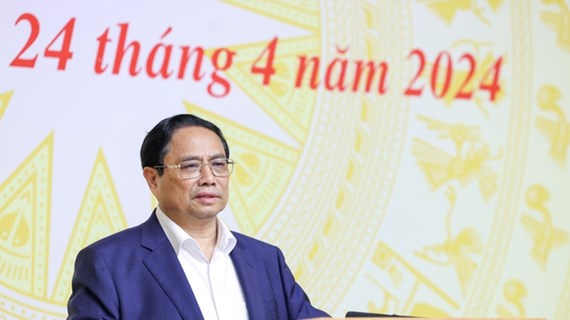Support needed for countryside women to learn jobs
Due attention should be given to working out support policies to
encourage women in rural areas to voluntarily take vocational training
courses to improve their lives and their participation in the national
industrialisation and modernisation.
Due attention should be given to working out support policies to
encourage women in rural areas to voluntarily take vocational training
courses to improve their lives and their participation in the national
industrialisation and modernisation.
Women account for 52 percent of Vietnam’s workforce, concentrating mostly in rural areas. The percentage of countryside women yet trained with occupations, however, remains high, at 90.7 percent.
Statistics on gender in Vietnam in the 200-2010 period revealed up to 80.5 percent of women living in rural areas in the Red river delta region in the north and 92.3 percent of women in the Mekong delta region in the south have no job skills.
Women with university, college and higher education levels in the Red river delta account for 11.2 percent while the rate is only 4.1 percent in the Mekong delta region.
Professor and Doctor Pham Thi Tran Chau, President of the Vietnam Association for Intellectual Women, said that it is necessary to diversify training forms to attract females in rural areas to learn jobs.
Vietnam’s population officially hit 90 million on November 1, with about 63 million people in working age, reflecting the ‘golden population structure’ in the country. The country is to see about 1 million people joining workforce annually.
As an once-in-a-lifetime opportunity for Vietnam, the “golden population structure” offers an opportunity to improve workers’ standard so that the economic structure can be transferred in line with the labour structure, especially the female labour force in rural areas.
Vietnam has launched a national strategy on gender equality for the 2011-2020 period with the aim of raising awareness, narrowing gender gap and enhancing women’s position.
The Government has deployed solutions in terms of law enforcement and international cooperation to surpass challenges regarding the awareness about gender equality, and eliminate gender and domestic violence as well as gender gaps of employment, income and social position.
By the end of 2011, female literacy was 92 percent and about 80 percent of girls at remote, far-flung and ethnic regions go to school at the right age.
Thanks to such efforts, Vietnam was placed 47 th out of 187 countries in the UN’s Gender Inequality Index last year compared with its 58 th position out of 136 countries recorded in 2010.
However, Vietnam is still facing an array of challenges such as low percentage of ethnic women involving in leadership at all levels and high poverty rate among minority groups.
The government will continue working to raise public awareness of gender equality while strengthening international cooperation in dealing with gender inequality, especially among disadvantaged groups and in strategic realms such as education, healthcare and employment.-VNA
Women account for 52 percent of Vietnam’s workforce, concentrating mostly in rural areas. The percentage of countryside women yet trained with occupations, however, remains high, at 90.7 percent.
Statistics on gender in Vietnam in the 200-2010 period revealed up to 80.5 percent of women living in rural areas in the Red river delta region in the north and 92.3 percent of women in the Mekong delta region in the south have no job skills.
Women with university, college and higher education levels in the Red river delta account for 11.2 percent while the rate is only 4.1 percent in the Mekong delta region.
Professor and Doctor Pham Thi Tran Chau, President of the Vietnam Association for Intellectual Women, said that it is necessary to diversify training forms to attract females in rural areas to learn jobs.
Vietnam’s population officially hit 90 million on November 1, with about 63 million people in working age, reflecting the ‘golden population structure’ in the country. The country is to see about 1 million people joining workforce annually.
As an once-in-a-lifetime opportunity for Vietnam, the “golden population structure” offers an opportunity to improve workers’ standard so that the economic structure can be transferred in line with the labour structure, especially the female labour force in rural areas.
Vietnam has launched a national strategy on gender equality for the 2011-2020 period with the aim of raising awareness, narrowing gender gap and enhancing women’s position.
The Government has deployed solutions in terms of law enforcement and international cooperation to surpass challenges regarding the awareness about gender equality, and eliminate gender and domestic violence as well as gender gaps of employment, income and social position.
By the end of 2011, female literacy was 92 percent and about 80 percent of girls at remote, far-flung and ethnic regions go to school at the right age.
Thanks to such efforts, Vietnam was placed 47 th out of 187 countries in the UN’s Gender Inequality Index last year compared with its 58 th position out of 136 countries recorded in 2010.
However, Vietnam is still facing an array of challenges such as low percentage of ethnic women involving in leadership at all levels and high poverty rate among minority groups.
The government will continue working to raise public awareness of gender equality while strengthening international cooperation in dealing with gender inequality, especially among disadvantaged groups and in strategic realms such as education, healthcare and employment.-VNA













